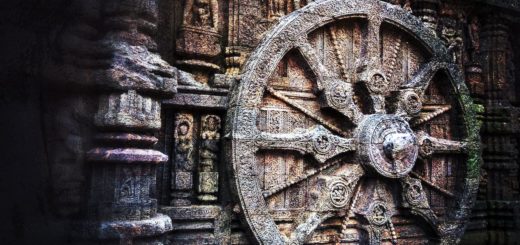Egyptian Society: Classes and Social Structure

Hey there, amazing readers! 🖐️ Just a quick note: yes, we know there are a lot of ads here. Trust us, we get it—it’s not the prettiest look, but they help us keep this blog alive and kicking. Those pesky little ads cover the costs of all the behind-the-scenes magic, from hosting and tech stuff to creating content we hope you’ll love.
We’re committed to delivering quality posts, and your support (even just sticking around despite the ads) means everything to us. So, bear with us, and thanks for helping us keep the good vibes rolling. Now, on to the fun stuff! 😉
TRANSLATE BUTTON AT THE END OF THE ARTICLE
Introduction to Egyptian Society
Ancient Egyptian society was structured in a complex hierarchy that determined an individual’s place and role within the community.
The social structure of Egypt was divided into distinct classes, each with its own rights, duties, and privileges.
Understanding the different classes and social organization is crucial to gaining insight into the daily lives and interactions of ancient Egyptians.
Ancient Egyptian Social Classes
The social hierarchy of ancient Egypt was pyramid-shaped, with the pharaoh at the top and slaves at the bottom.
In between, there were several classes that played vital roles in society, such as the nobility, priests, scribes, artisans, merchants, peasants, and slaves.
Each class had specific responsibilities and contributed to the overall functioning of Egyptian society.
Pharaohs and Nobility
At the pinnacle of Egyptian society were the pharaohs, considered divine rulers with absolute power and authority.
Beneath the pharaoh were the nobility, including high-ranking officials, military leaders, and members of the royal court.
The nobility enjoyed privileges such as large estates, luxurious homes, and access to the finest goods and services in ancient Egypt.
Priests and Scribes
Priests held a significant role in Egyptian society, serving as intermediaries between the people and the gods.
They conducted religious ceremonies, maintained temples, and performed rituals to ensure the favor of the gods.
Scribes were another important class, responsible for record-keeping, writing official documents, and preserving knowledge through written texts.
Artisans and Merchants
Artisans and merchants formed a crucial part of the Egyptian economy, producing goods, trading commodities, and facilitating commerce.
Artisans were skilled craftsmen who created intricate and beautiful artifacts, while merchants traveled far and wide to exchange goods with foreign lands.
Both classes contributed to the prosperity and cultural richness of ancient Egypt.
Peasants and Slaves
Peasants made up the largest segment of Egyptian society, working the land, cultivating crops, and supporting the agricultural sector.
Slaves, on the other hand, were typically prisoners of war or individuals who had fallen into debt bondage.
They performed laborious tasks and served the elite classes, often under harsh conditions.
Social Mobility in Ancient Egypt
While social mobility was limited in ancient Egypt, it was not entirely impossible.
Individuals could rise through the ranks by demonstrating exceptional skill, loyalty, or bravery.
Pharaohs occasionally granted titles and privileges to commoners who had distinguished themselves in service to the crown.
However, these instances were rare and usually involved individuals of exceptional merit.
Gender Roles in Egyptian Society
Gender roles in ancient Egypt were clearly defined, with men and women having distinct responsibilities and expectations.
Men typically worked in fields, served in the military, or held administrative positions, while women managed households, raised children, and engaged in domestic tasks.
Despite these differences, women in ancient Egypt enjoyed more rights and freedoms compared to other ancient civilizations.
Family Structure and Kinship
Family played a central role in Egyptian society, serving as the foundation of social organization.
Extended families lived together in multigenerational households, with elders respected for their wisdom and experience.
Kinship ties were strong, and family members supported each other in times of need, forming tight-knit communities that provided social and emotional support.
Education and Literacy in Ancient Egypt
Education was highly valued in ancient Egypt, with a focus on training scribes, priests, and elite members of society.
Schools taught reading, writing, mathematics, and religious texts, preparing students for roles in government, administration, and religious service.
While education was primarily reserved for the privileged classes, some commoners also received basic instruction in local schools.
Religion and Society
Religion permeated every aspect of ancient Egyptian society, shaping beliefs, practices, and social norms.
The Egyptians worshipped a pantheon of gods and goddesses, offering prayers, sacrifices, and rituals to secure divine favor.
Religious festivals, ceremonies, and observances played a significant role in community life, uniting people in shared beliefs and values.
Influence of Egyptian Social Structure on Culture
The social structure of ancient Egypt influenced every aspect of its culture, from art and architecture to governance and religion.
The hierarchical organization of society was reflected in monumental structures like pyramids and temples, which served as symbols of power and authority.
Artisans, craftsmen, and architects drew inspiration from the social order to create masterpieces that showcased the wealth and sophistication of Egyptian civilization.
Conclusion
In conclusion, Egyptian society was a complex and stratified system that shaped the lives and interactions of its people.
The different social classes, from pharaohs and nobility to peasants and slaves, each played a unique role in maintaining the stability and prosperity of ancient Egypt.
Understanding the social structure of Egyptian society provides valuable insight into its culture, values, and traditions, illuminating the rich tapestry of one of the oldest civilizations in the world.

The Enlightenment Journey is a remarkable collection of writings authored by a distinguished group of experts in the fields of spirituality, new age, and esoteric knowledge.
This anthology features a diverse assembly of well-experienced authors who bring their profound insights and credible perspectives to the forefront.
Each contributor possesses a wealth of knowledge and wisdom, making them authorities in their respective domains.
Together, they offer readers a transformative journey into the realms of spiritual growth, self-discovery, and esoteric enlightenment.
The Enlightenment Journey is a testament to the collective expertise of these luminaries, providing readers with a rich tapestry of ideas and information to illuminate their spiritual path.
Our Diverse Expertise 🌟
While our primary focus is on spirituality and esotericism, we are equally passionate about exploring a wide range of other topics and niches 🌍📚. Our experienced team is dedicated to delivering high-quality, informative content across various subjects ✨.
To ensure we provide the most accurate and valuable insights, we collaborate with trusted experts in their respective domains 🧑🏫👩🏫. This allows us to offer well-rounded perspectives and knowledge to our readers.
Our blog originally focused on spirituality and metaphysics, but we’ve since expanded to cover a wide range of niches. Don’t worry—we continue to publish a lot of articles on spirituality! Frequently visit our blog to explore our diverse content and stay tuned for more insightful reads.





